I am intrigued by the tangled web of related bottles from Wilmerding and Kellogg, separately or together. G.O.'s post of the Wilmerding ad for S.H.M., and the chatter about the McKennas got me started. I'm going to just list some questions and assumptions and lets see where it goes.
S.H.M(t-169) The Superior Hand Made is the oldest of the W&K bottles, at least the non C&I SHMs are oldest. Like I noted, we find these in Utah with the early stuff. 1873-74 stuff. The only other place I have seen them in abundance is C-bus, again 1873-75 stuff.
C&I mold variation is much later by my estimation. A digger I know in the Idaho pan-handle area dug one in 1999 with just the lip broken out. He found it in some early 80's stuff. Just recently a C&I was located in the Boise area. Digging context unknown.
The C&I SHM's are very attractive bottles, whittled and light yellow amber color.
McKennas(t-168) Mckennas long lived, say 1876-1883. Kellogg separated from Wilmerding, long before end of McKennas usage. Still, W&K on reverse shoulder.
The C&I McKennas are found in Calif., Nev., and here in Utah. Found a couple of broken ones in a small mill town on Rush Lake. This mill serviced ore from the Chicago Mine out of Jacob City, Ut. That would give this bottle at least a fingerprint in the mid to late '70s. I just purchased one from a digger in Nevada, said it came from Storey County. Digging context unknown.
C&I Mckennas color range from medium amber, orange amber, to fairly dark amber. Not even close to the SHM C&I variants.
United We Stand(t-170) circa 1878-1883, Kellogg gone, Wilmerding is on his own with this one. W in circle on the back. No C&I variant with this bottle. Why not??
C.W.Stuart(t-146) circa 1883-87. Wilmerding definitely the distributor. Sold the brand to Loewe Brothers in 1892. Much later bottle than once thought. Two broken examples found in the Idaho panhandle, both in '80s stuff. All examples have C&I glass works initials on base. Using the back half of the Cassin's Golden Plantation(t-16) mold. Which has the C&I initials on the base of course.
What is the relationship between Wilmerding and the Cassin Bros.?
Golden Plantation fifth is also later than once thought. Whenever it disappeared, was as early as the Stuarts could have started. Using the same mold.
And as if to play with our heads just a bit more, Stuart -(Wilmerding) has the small letter "k" on the reverse. Why a K?? Kellogg was long gone when the Stuarts came out. A "w" - Wilmerding, even a "L" - Loewe Bros, but a "K"
what the...
Kelloggs(t-171) circa 1890's. Red amber - German blown. W.L. Co. -- Wilmerding and Loewe. Some known with W & Co.-- Wilmerding & Co.
My confusion here is with the Kelloggs name. Did I miss something? Wilson indicates that Kellogg left the liquor business to go into the banking business. Did he actually purchase the McKennas name or distillery? No?It's now Kellogg's Nelson County Kentucky Bourbon? Not busy enough counting coins, had time to formulate your own bourbon? Kellogg name on several different bottles of the 90's and tc. Don't know what gives with Kellogg. Must have been involved silently throughout the entire time? Which might account for that little "k" on the Stuarts. Really reaching on that one...
Alright, now that I have confused everyone, even myself, lets talk about the C&I variants.
Cunningham & Ihmsen glass works - Pittsburg (as in PA. not Calif.)
Supposedly C&I glass works stopped production of bottles in 1875. None of the 4 mentioned fifths with the C&I initials were made that early. ??
Lettering style, or font, on the C&I fifths is different than the counterpart W&K fifths. Golden Plantation fifth also with so-called "eastern style lettering". C.W. Stuart bottle has "western lettering", curved leg 'R'. Of course the Stuarts was just using the back half of the Golden Plantation mold. Which means, likely, that the "mold re-use"... Stuart from Golden Plantation was done in San Francisco... ??
The glass characteristics of the 4 C&I fifths appears western to my old eyes, espec. the SHM and the Golden Plantation. Hard to quantify this, but the glass comes out the ground fairly clean with these C&I's. Compare that to other Pittsburg blown glass you find in the west. The amber Rosedale fifth definitely Pittsburg product, MCC - McCulley Glass Works, usually look like hell when they come out of the ground. Beside the fact C & I was out of business before these bottles were blown. Did another Pittsburg works blow these bottles? So what gives? Molds made in Pittsburg, shipped west to be used at SF glass works? Plenty of mold makers in San Francisco by 1875. Why two molds anyway, weren't cranking out that many bottles.
McKennas variants are being used at the same time, SHM variants seem to have quite a time break in usage.
I'm going to let this sit here for your comments and corrections. This is what I like, stir the pot for new ideas and new information. Or maybe just some adjusting of the cluttered mess in my head... Wilmer"ding" has made me ding-eeee!
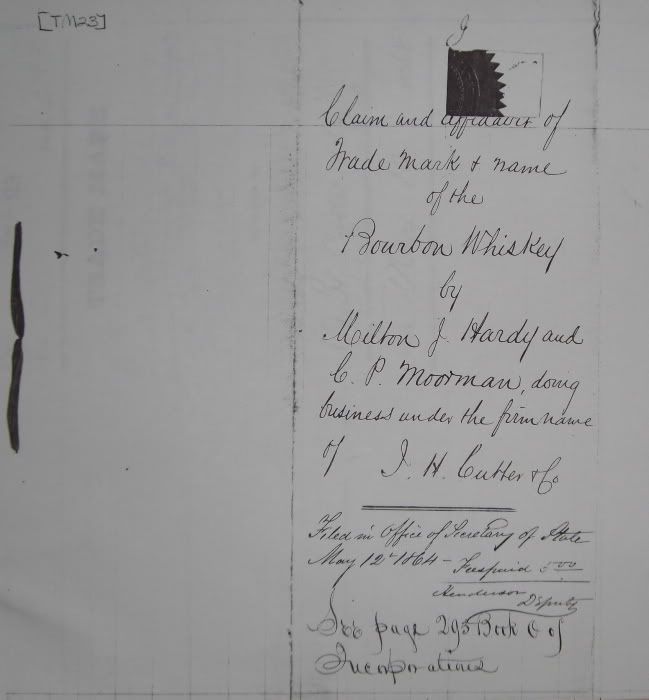
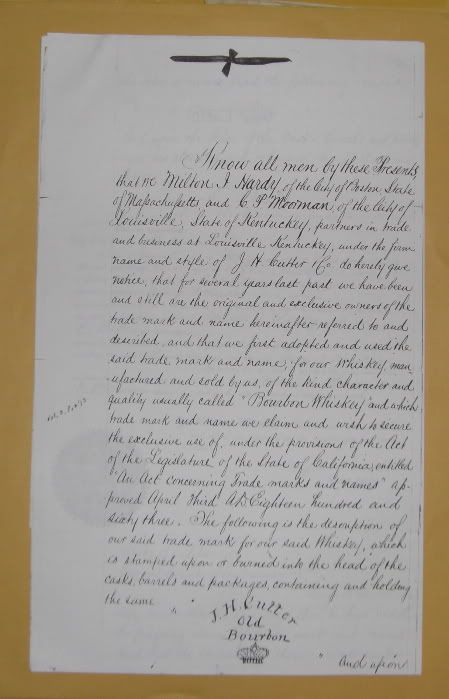
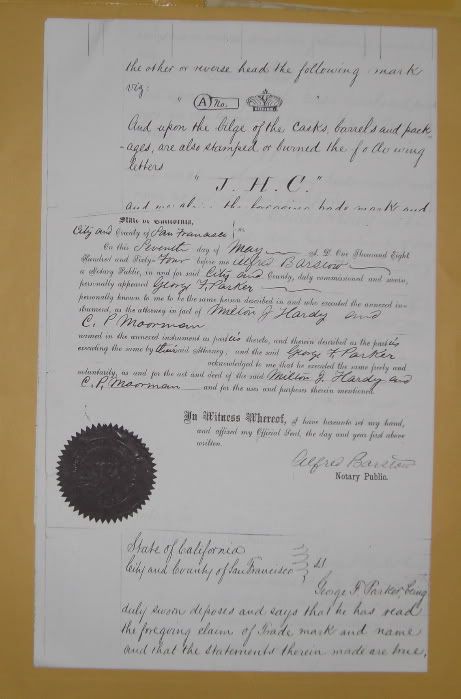



 Recently a bottle that appeared on Ebay caught my attention. Not because it was rare, but because of the way it was described. The teaser said "GLOPPY TOP old KELLOGG'S NELSON COUNTY whiskey bottle". The "hook" read
Recently a bottle that appeared on Ebay caught my attention. Not because it was rare, but because of the way it was described. The teaser said "GLOPPY TOP old KELLOGG'S NELSON COUNTY whiskey bottle". The "hook" read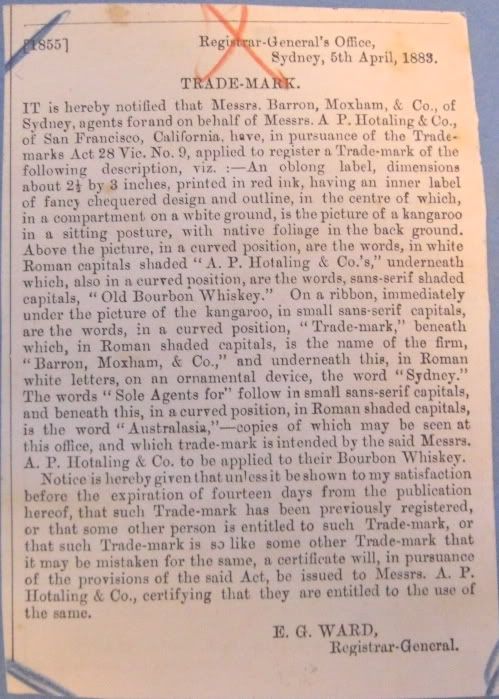
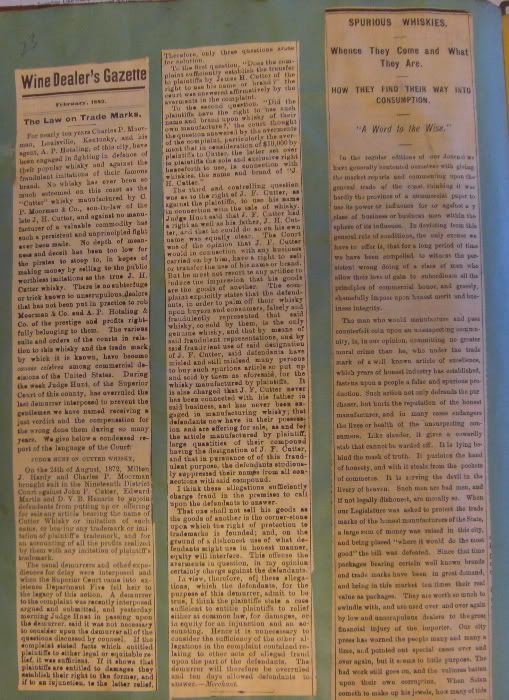


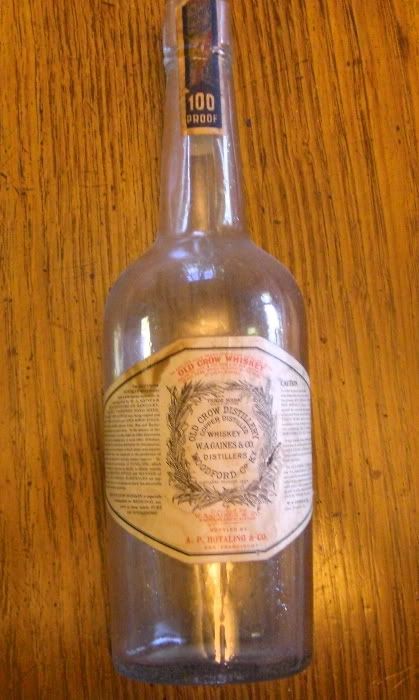








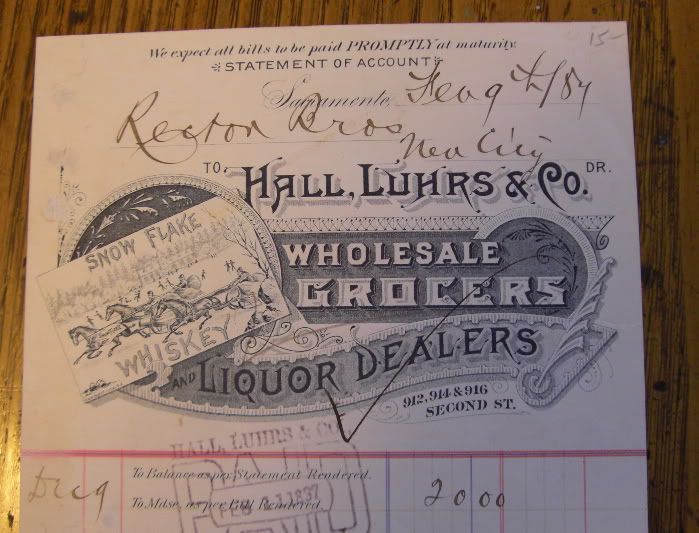
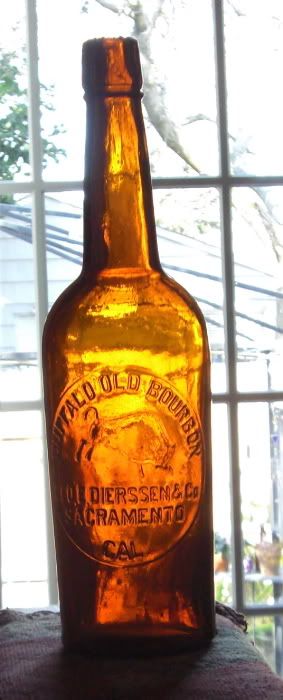
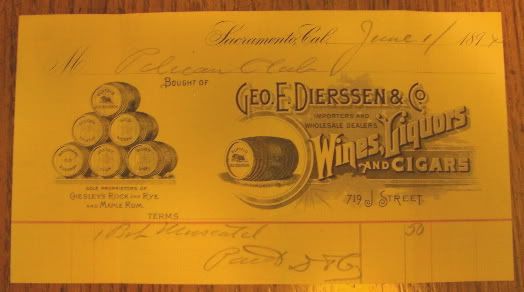
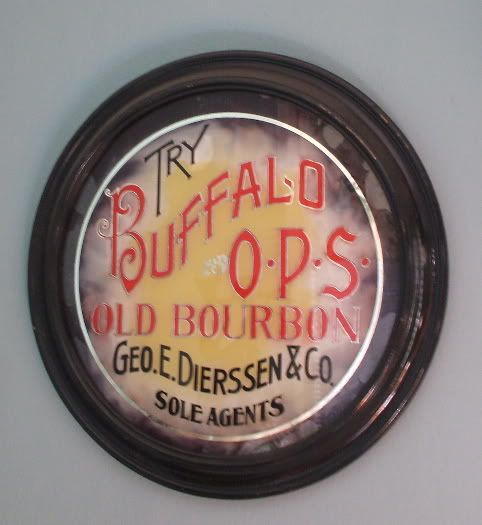
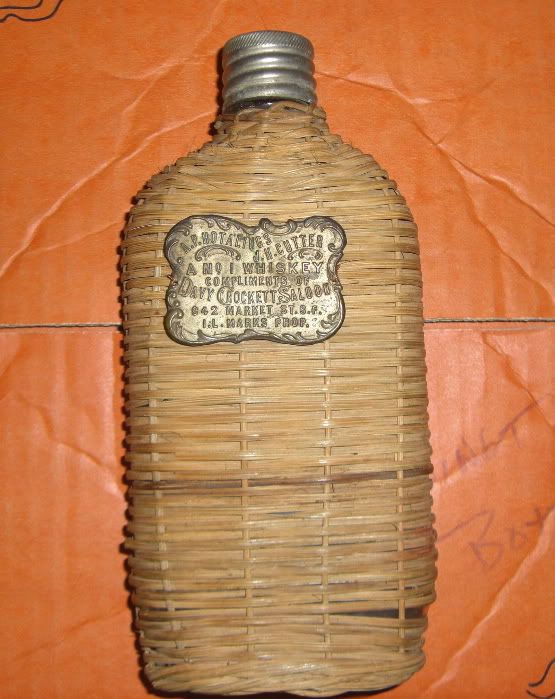
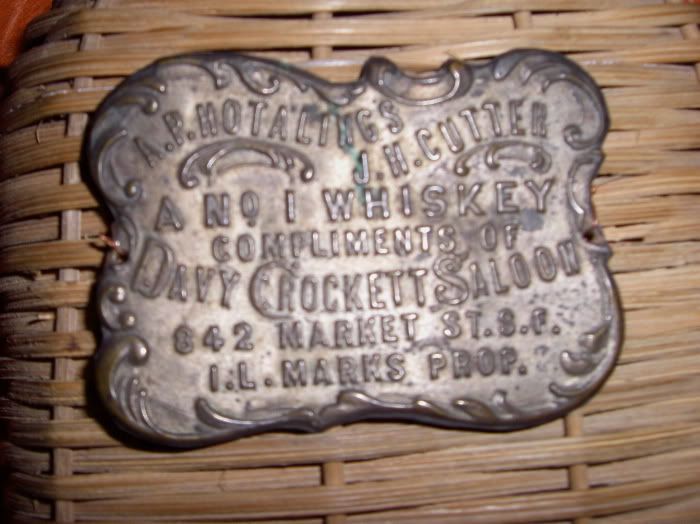

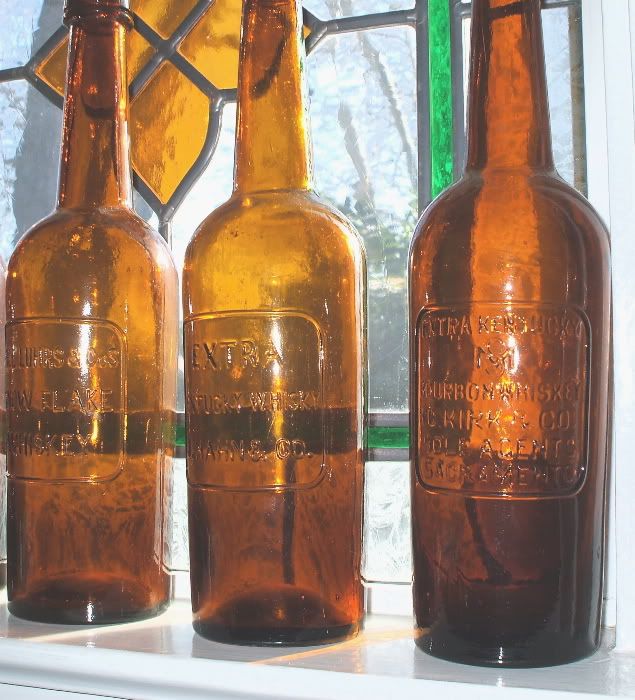

 er. The bear has some nice whittle and a super applied top.
er. The bear has some nice whittle and a super applied top.




